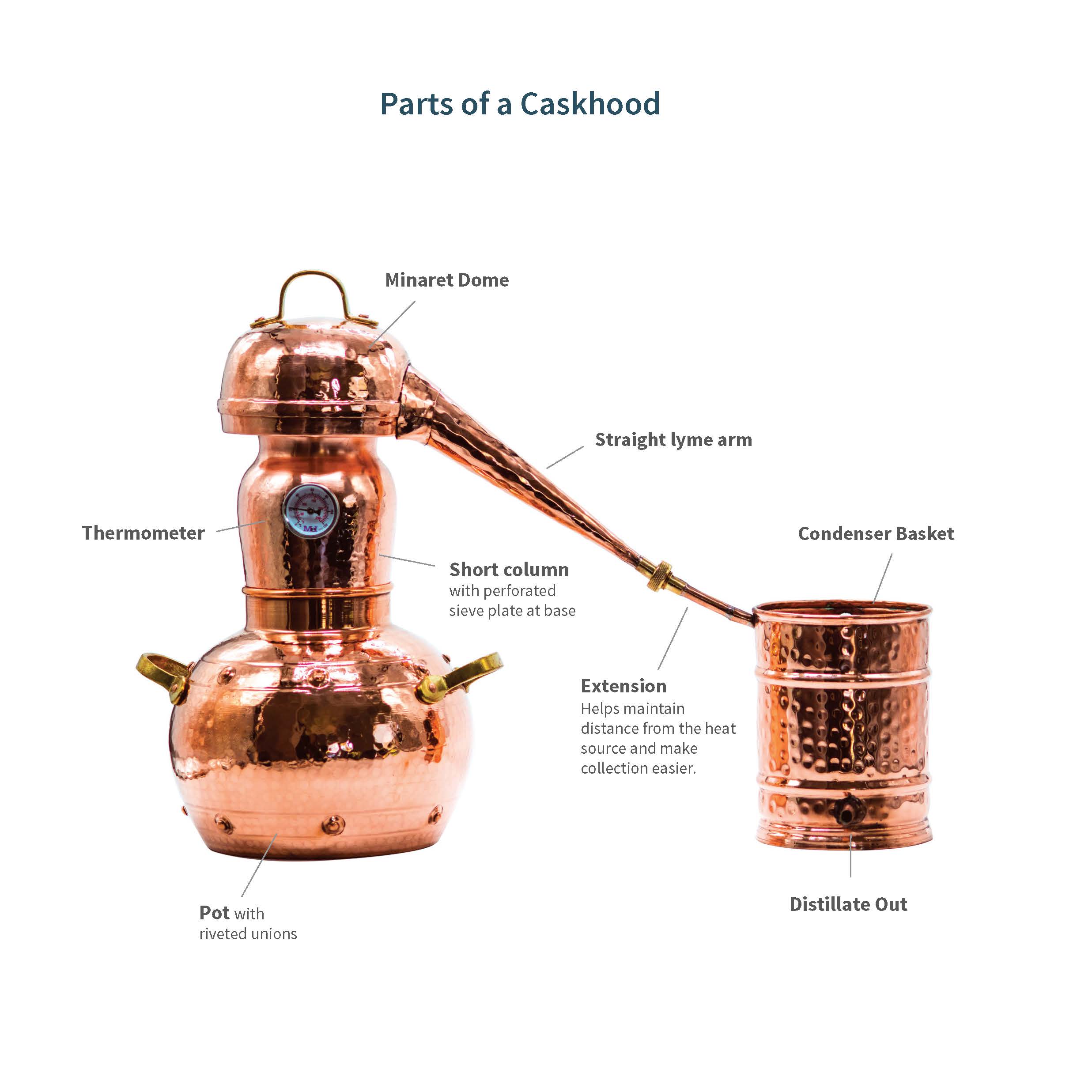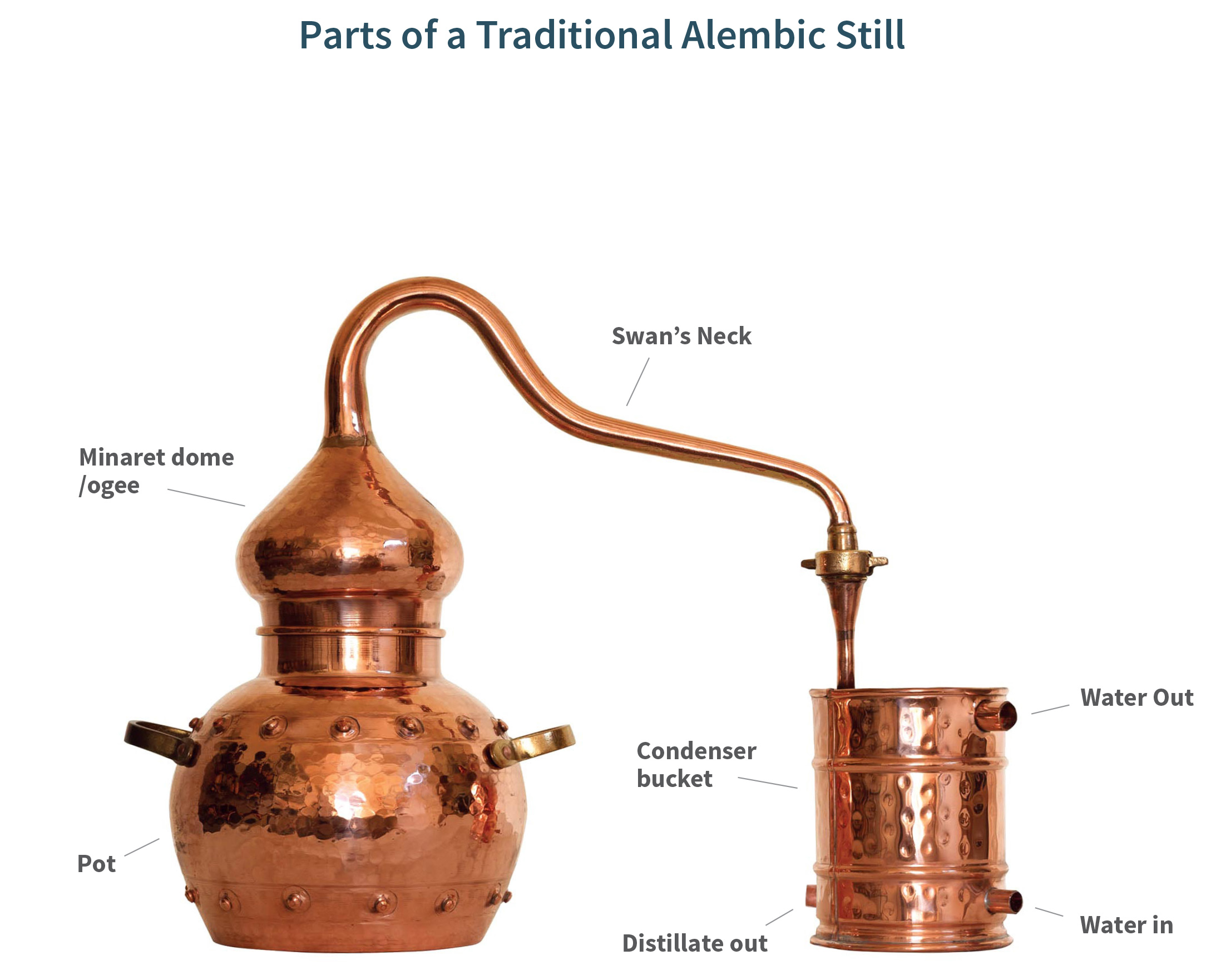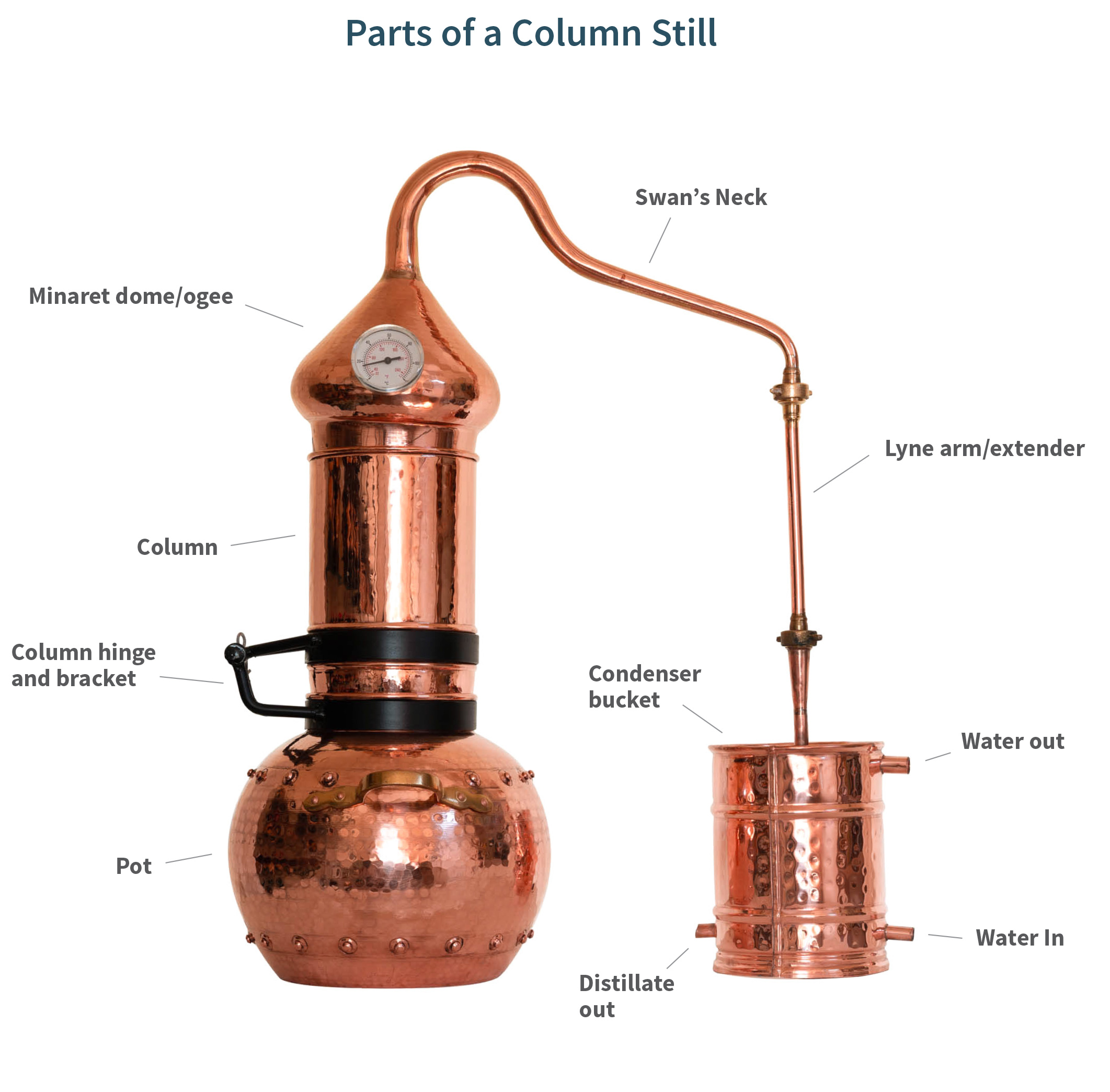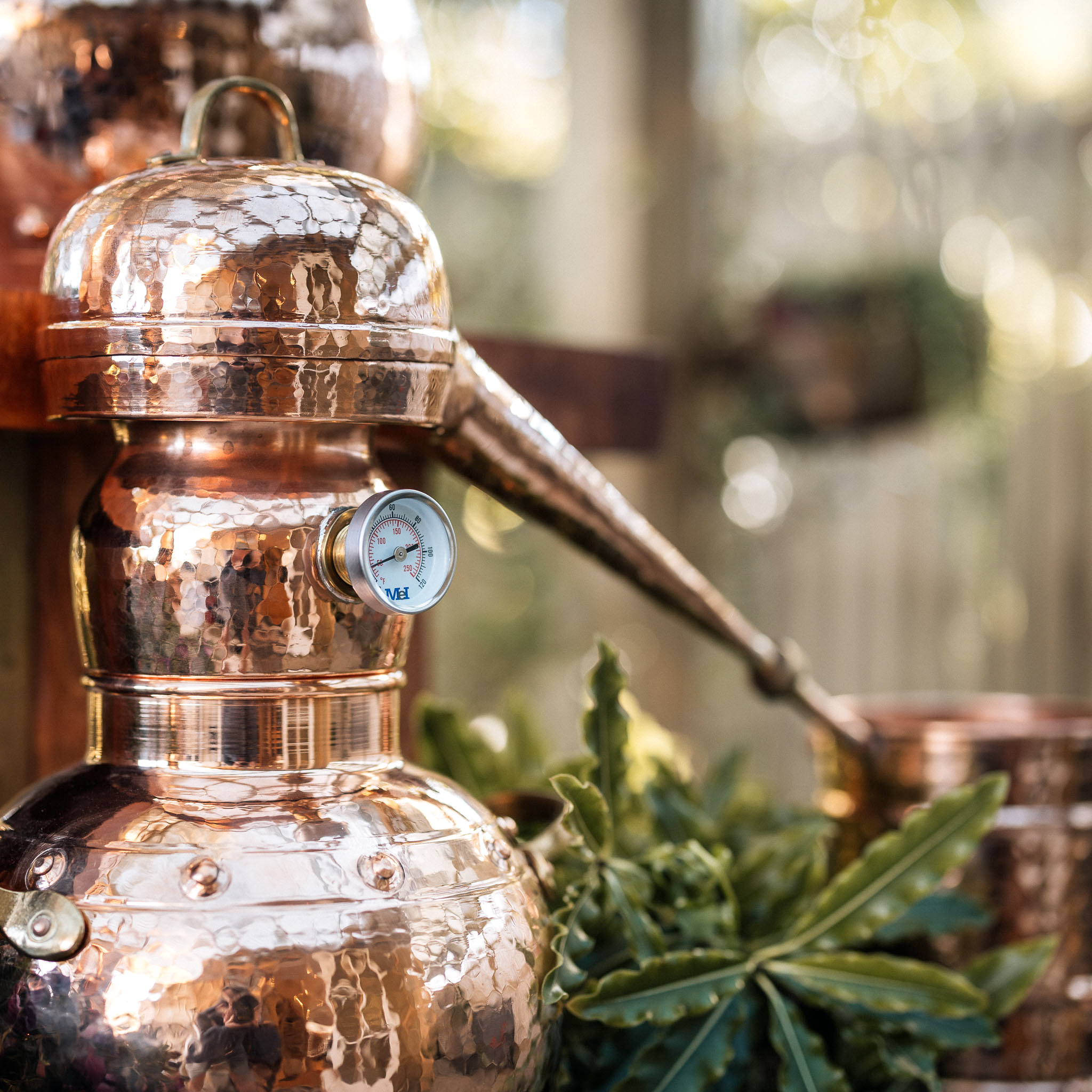We love cask hoods—here’s why
In our free introductory course on Types of Stills we run you through the main types of copper stills we use here at The Alembics Lab, and what you would use them for. We designed this video to help you choose the best still for you (both style and size).
If you’ve already viewed ‘Types of Stills’, you may have noticed that there’s one still we use often that missing—the alembic cask hood. This is because it’s a more recent addition to our Lab, and we’ve found it to be a very useful one. We regularly use it to distil gin, aromatised spirits, hydrosol and more recently we’ve been using our 10L cask hood to distil perfume attars with really impressive results.
Could they also be the still for you? Let us give you a run down.



First off, note the difference style from our traditional alembics and column stills with their minaret dome and graceful swans necks. Our cask hood is closer to our small appliance still in design—its dome is flat at the base, and the shape is broader, more flattened. It also has a short, squat column with an optional sieve plate, and the lyne arm goes straight down from the dome to the condenser with no curves. In comparison to its sinuous and graceful cousins the cask hood is upright and direct.
So how does this different shape influence a distillation? While all these stills are beautiful, their shapes always have purpose.
The cask hood’s design means that overall there is less reflux—as the steam is flowing through the plant material with less obstruction from curves and multiple plates. Even with the sieve plate you will get less reflux in your distillation than you would on bigger column stills—while still having the opportunity to pack material into the column to vapour-infuse.
The round belly of the pot has a generous capacity for packing in plant material, and (as just mentioned) you can also pack the squat column. If the plant material is fine you can use the sieve plate to hold it in place so it doesn’t fall into the pot, but if you’re packing mainly intertwined leaves and twigs you have the option to leave the sieve plate out (and they will stay put) reducing reflux. (*Note, we keep talking about reflux, if you want to know more you can read about it here—why it’s good for some distillations, and unwanted in others).
Great for hydrosol (with an EO bonus)
The cask hood’s design means vapours have a greater opportunity to collect and cool in the ambient temperature of the broader dome—then they travel through the straight lyne arm, which directs them swiftly to the cooling condenser, making our hydrosol crisp and bright. And the benefit of the column is that you can pack some extra material in—which both optimizes the yield and lets us capture those bright, vibrant top notes from the materials that will be subjected to the steam. In many distillations you will be able to get a vibrant and saturated hydrosol as well as a meniscus of essential oil, which is why we also like using them to distil attars.
Distilling attars
This is a style of distillation designed to distil aromatic plants that are low in essential oil yields but intensely aromatic. This technique was made famous in places like India, which is known for its highly-prized attars—usually of rose, orange blossom, tuberose and jasmine.
These flowers are distilled into a receiver oil–like jojoba, fractionated coconut or (more traditionally) sandalwood. Sandalwood has a delicate aroma, is safe to use directly on the skin (in dabs) and being rich in sesquiterpenes, captures the highly volatile aroma molecules of the delicate flowers. The still is charged multiple times with fresh flowers until the receiver oil is saturated with the aroma. Cask hoods are both easy to recharge with plant material, and good with delicate aromas as they keep vapours cooler.
Here’s a short video of the cask hood in action distilling a perfume attar. Note that when we say there have been ‘three charges’ or ‘six charges’ we mean that we have done that number of distillations through the same oil, repacking the still and repeating the distillation until the oil is saturated.
Gin and aromatised spirits
Cask hoods make fabulous gin stills. The reason they shine is their small column, which is perfect for suspending gin botanicals for vapour infusion. That means you can experiment with fully vapour infused gin, or any combination of macerated and vapour infused ingredients. They are also quick and efficient.
For those of you who think it’s time to give juniper a break and start being adventurous with other botanical recipes, the caskhood is a great design for working with finished spirits and infusing them with flavour. The smaller sizes are great finishing stills, and the larger sized can handle more significant output.
We also regularly use our cask hoods for making aromatised wines (we are currently experimenting with our own Lillet-inspired blends to get a distinctive and delicious vermouth). So if you want to branch out and begin steeping and overlaying wine with aromatics, why not give this a go too? There is so much more beyond our beloved gin.
We will be teaching many of these techniques in our Elements of Flavour and Elements of Fragrance workshops. Keep an eye out for the latest dates on our workshop page.
And if you’d like to know more about cask hoods, you’re welcome to get in touch.





